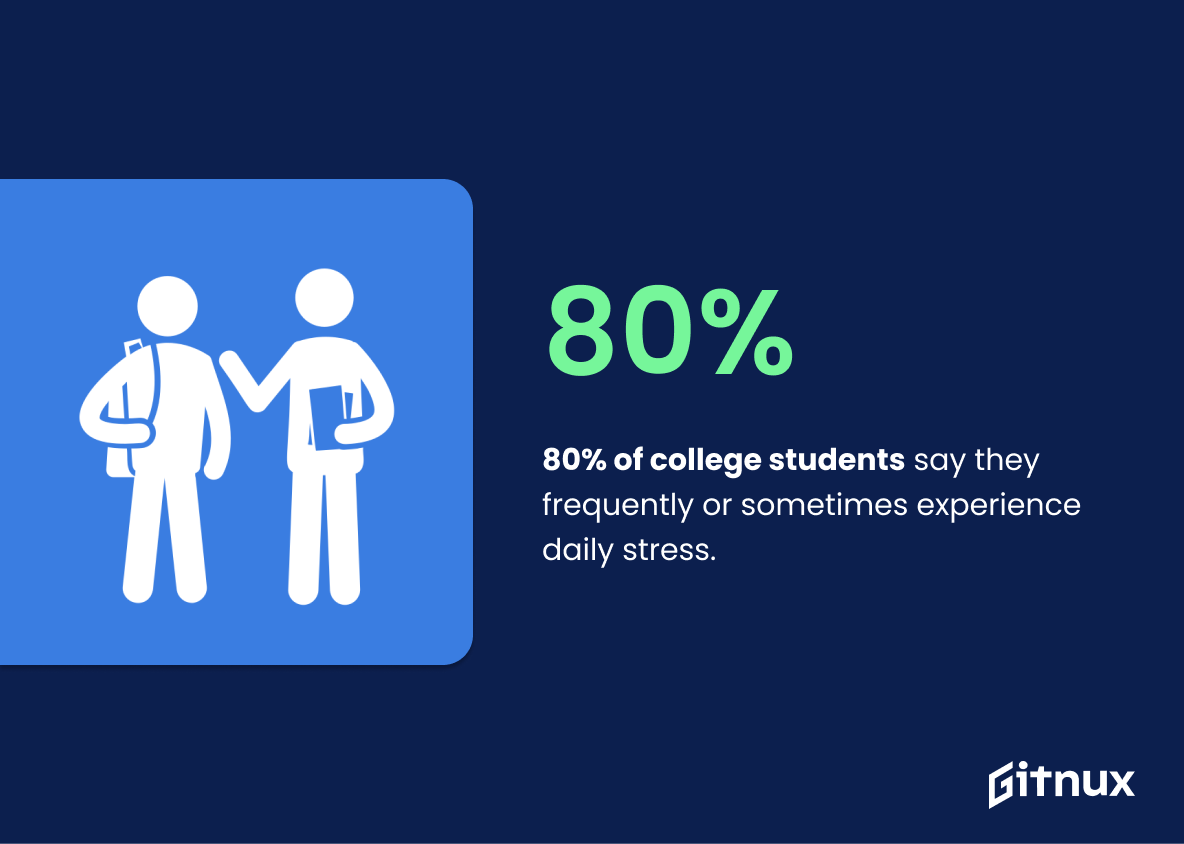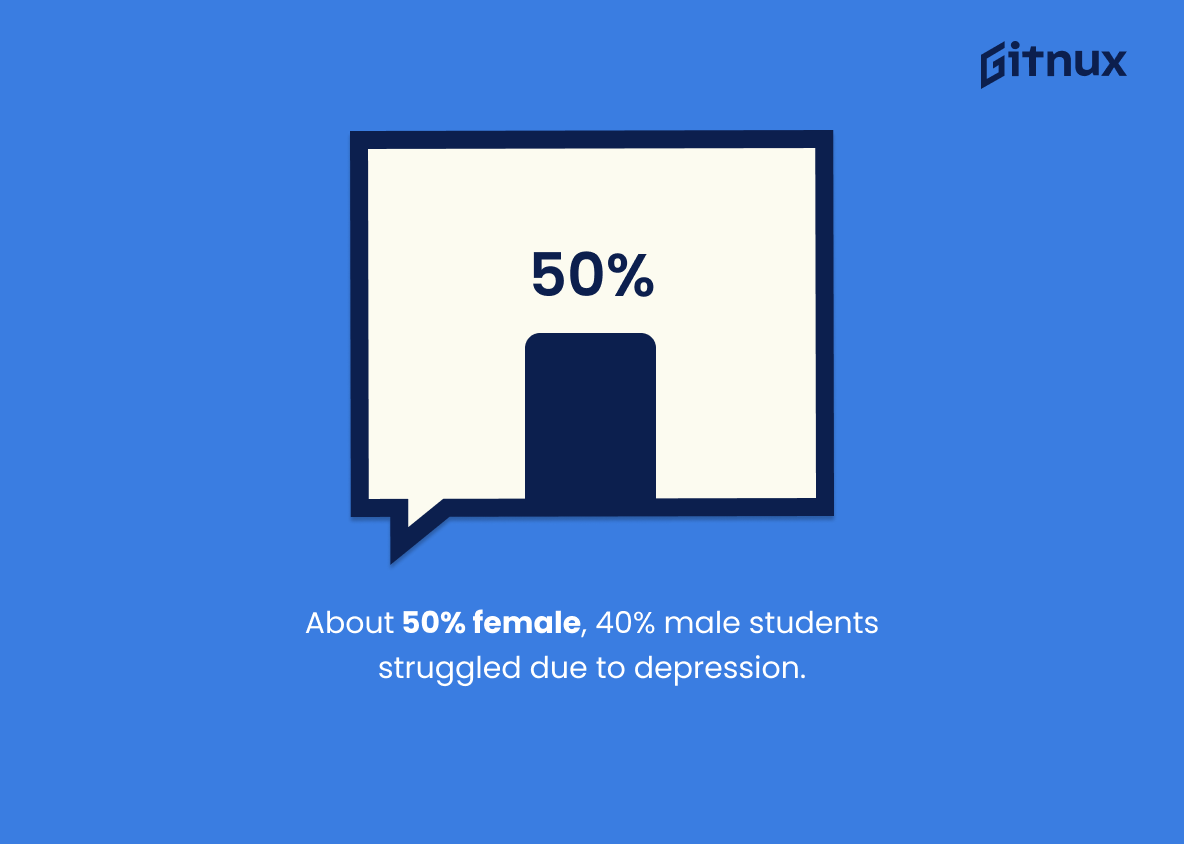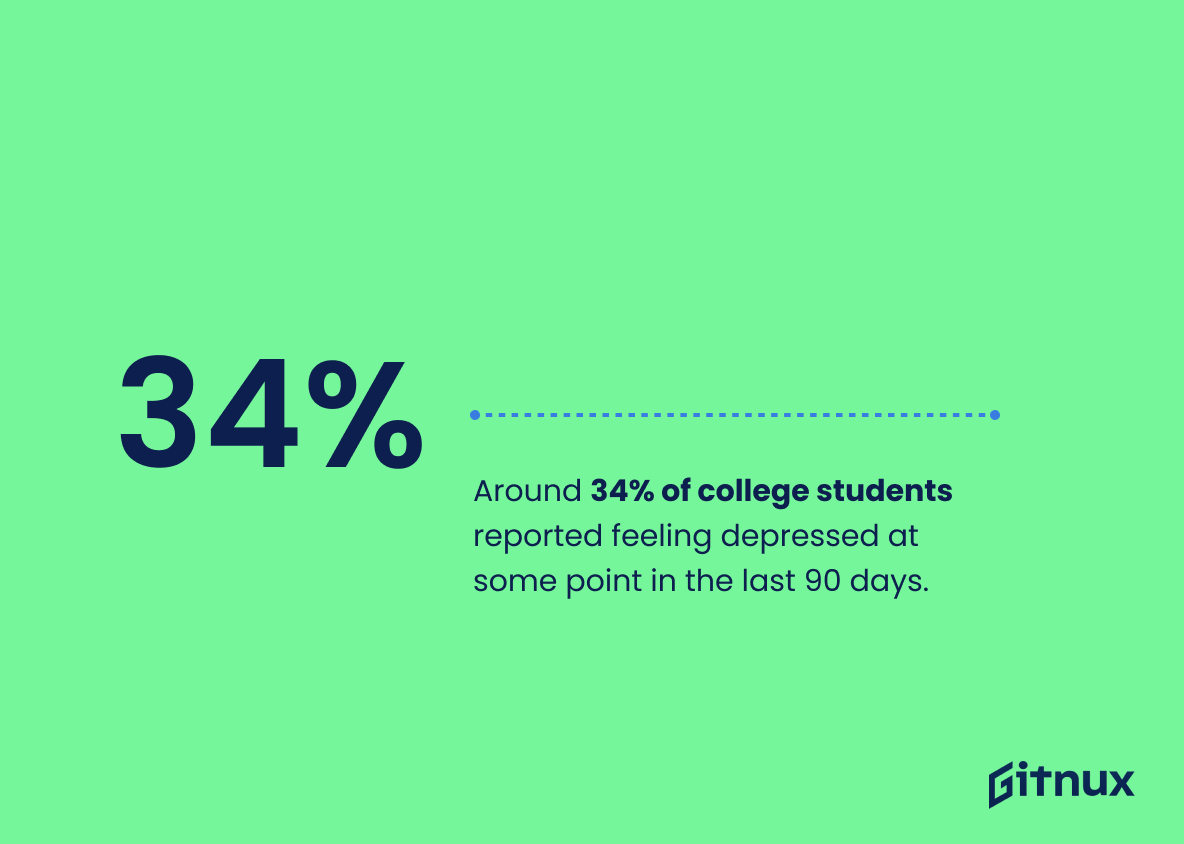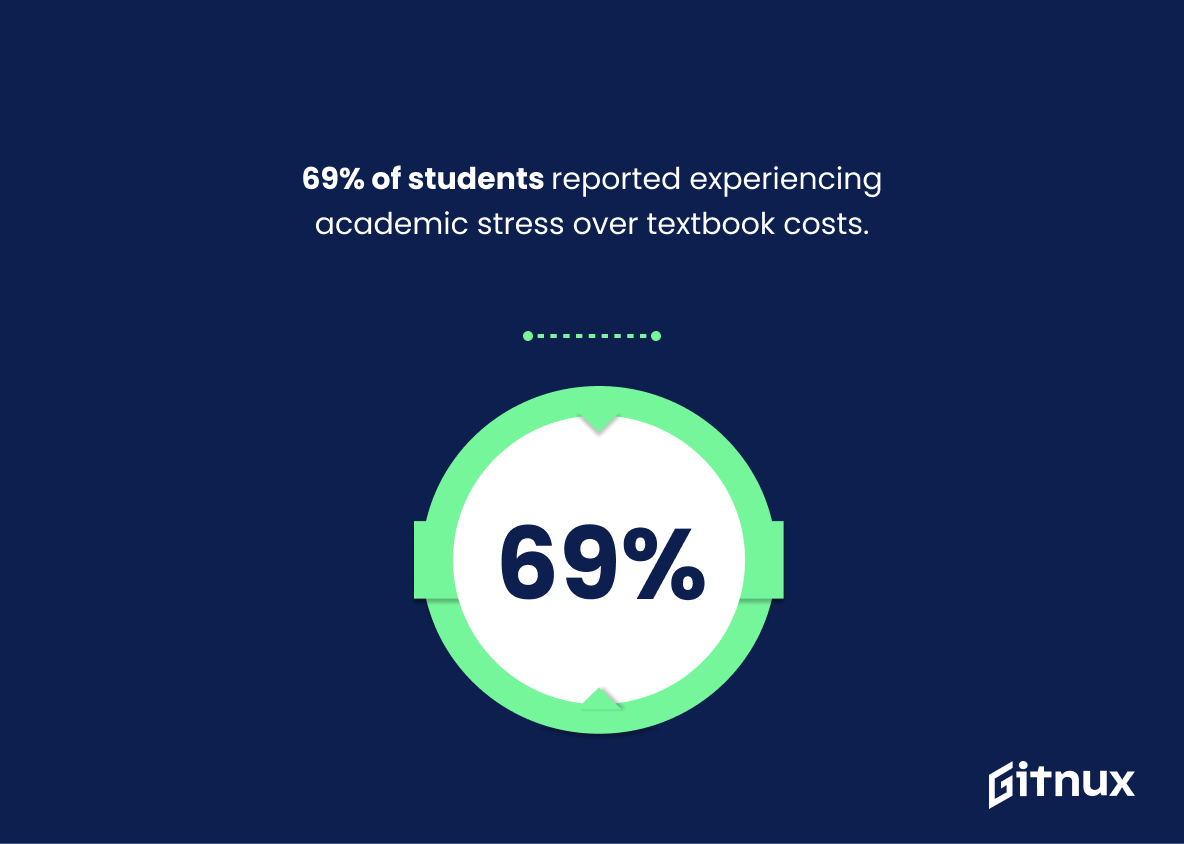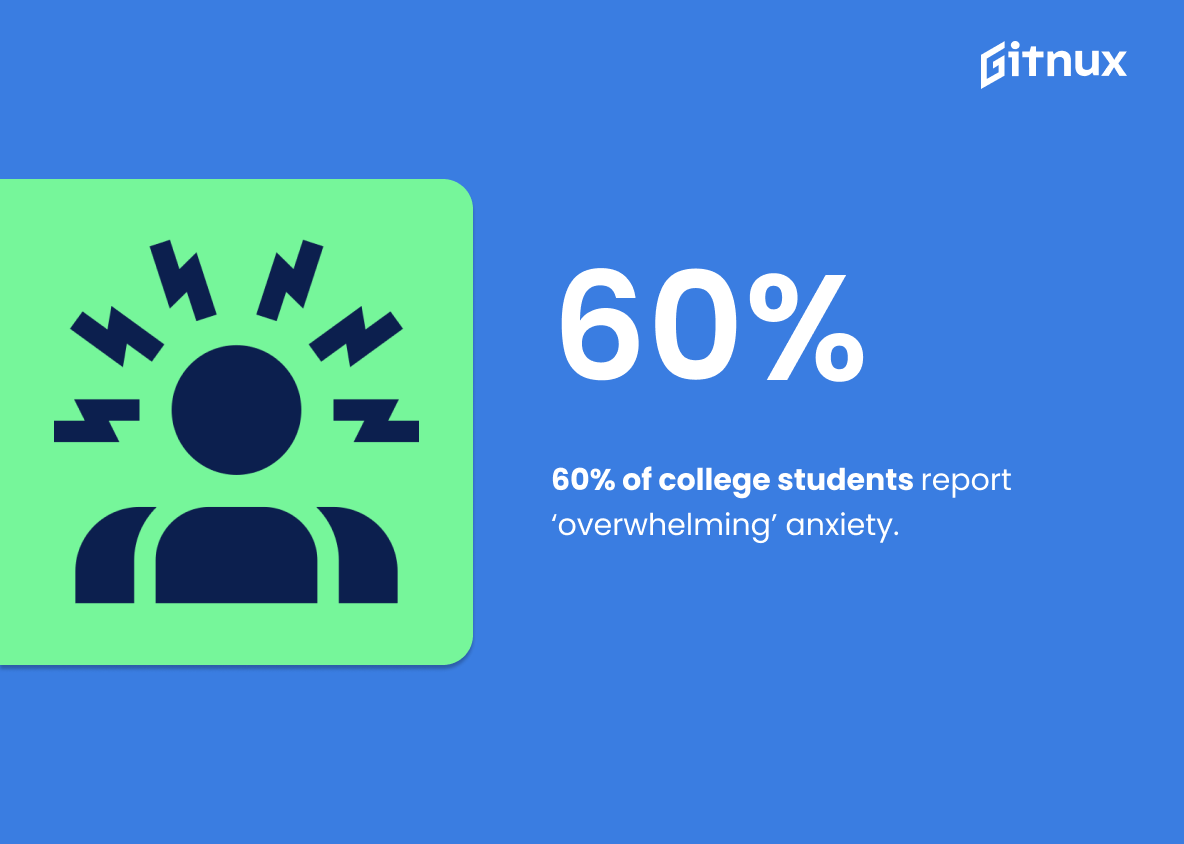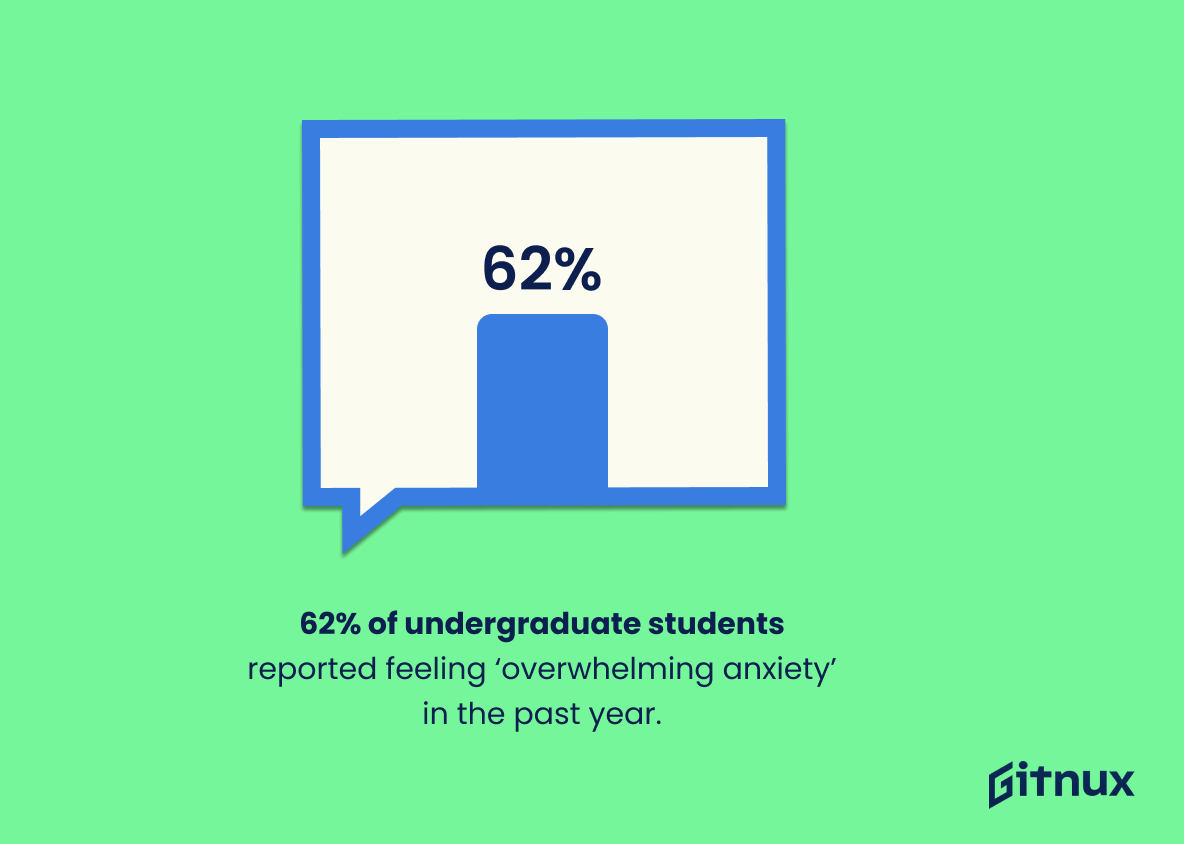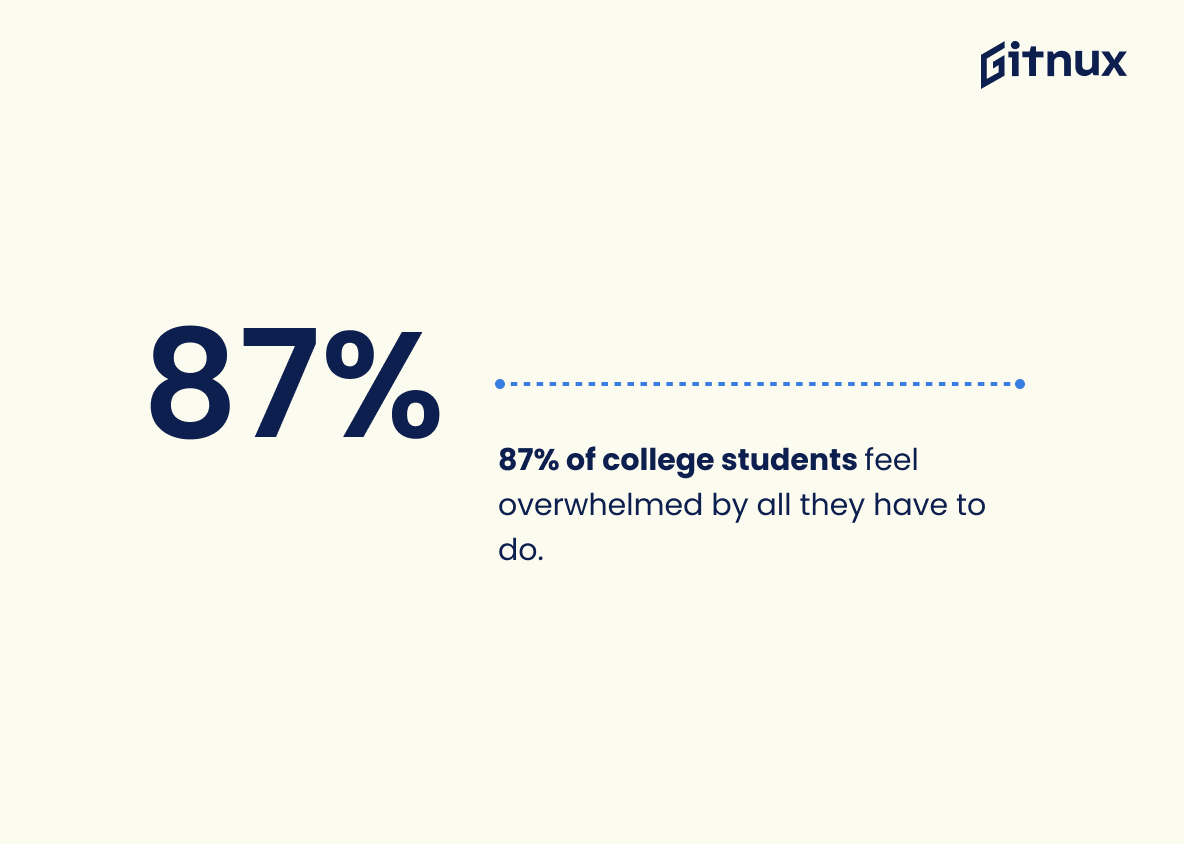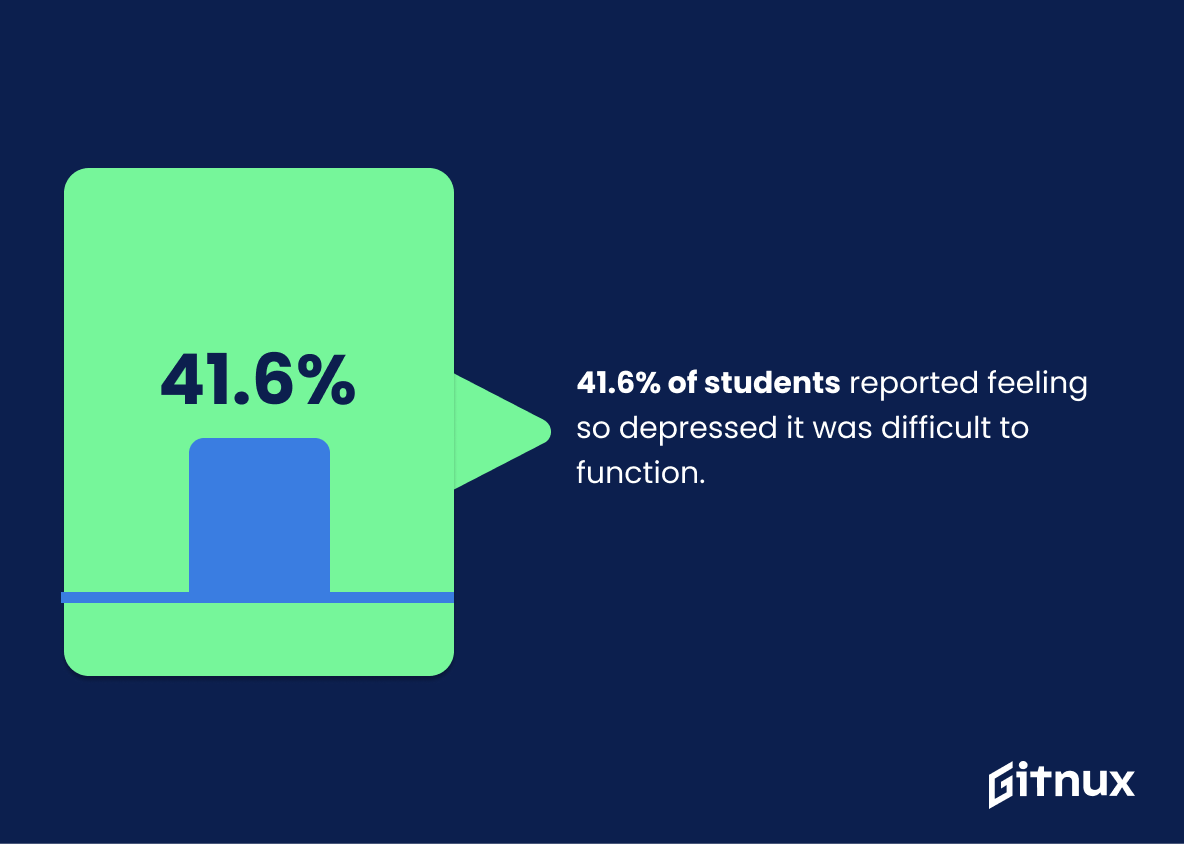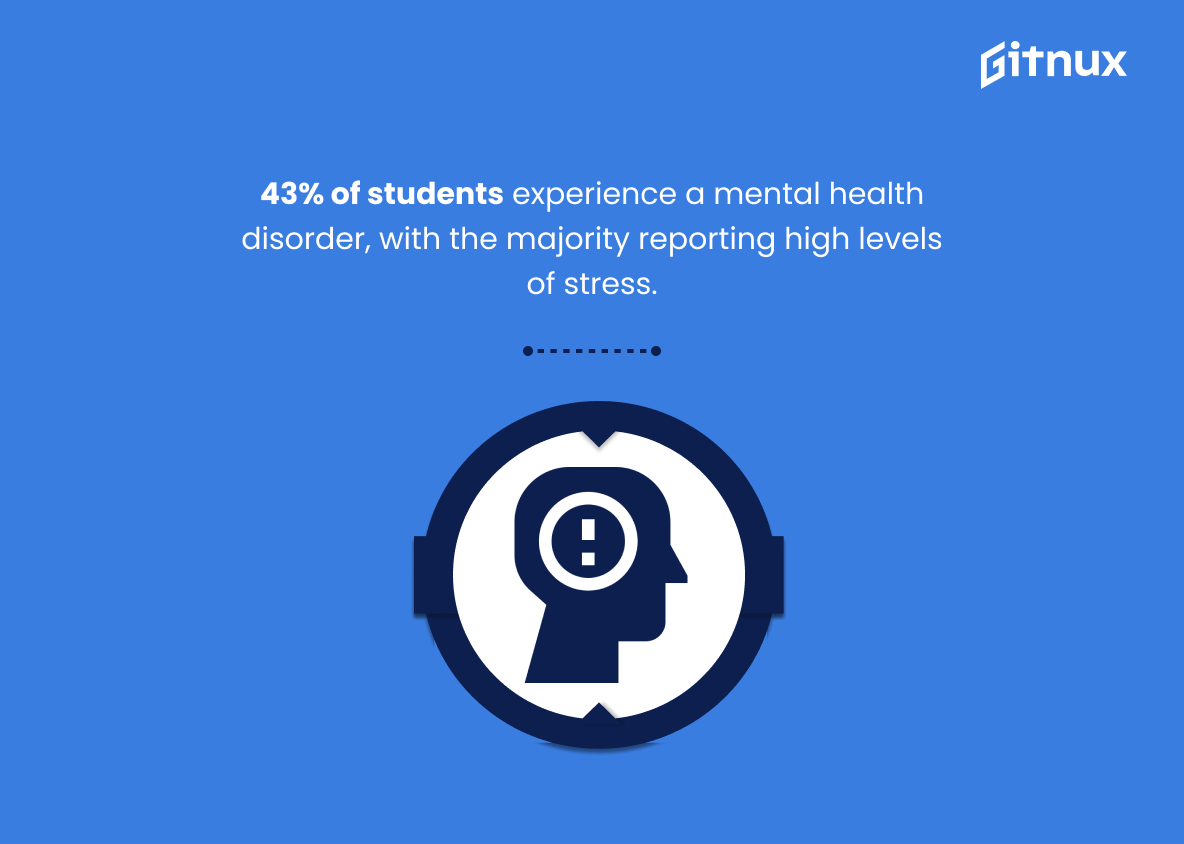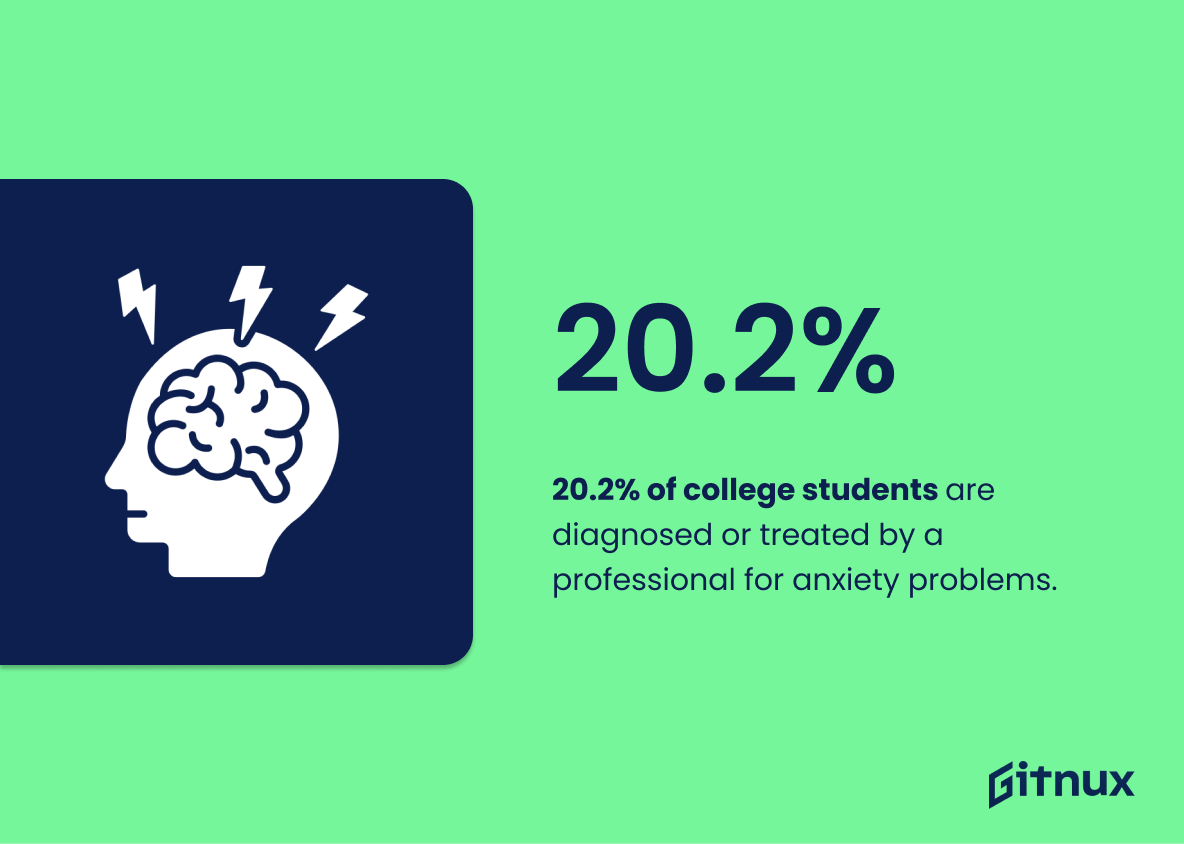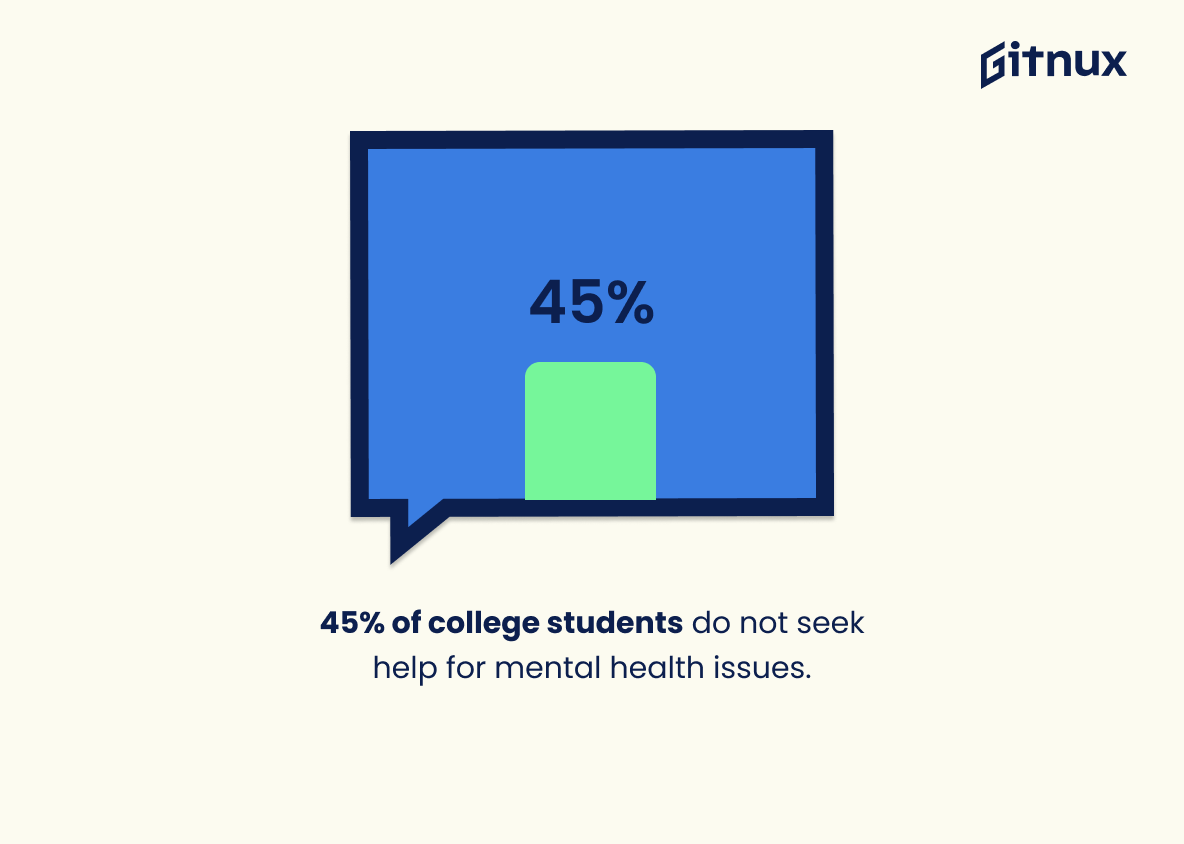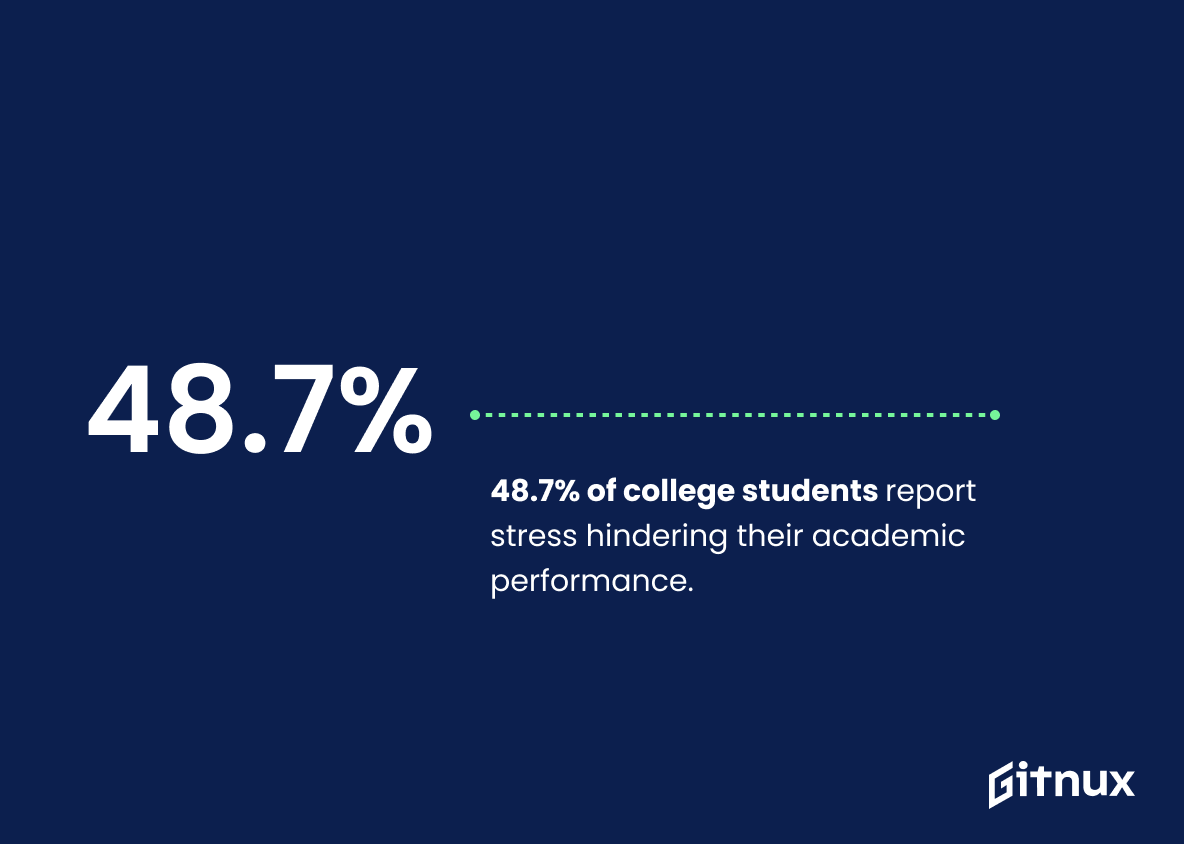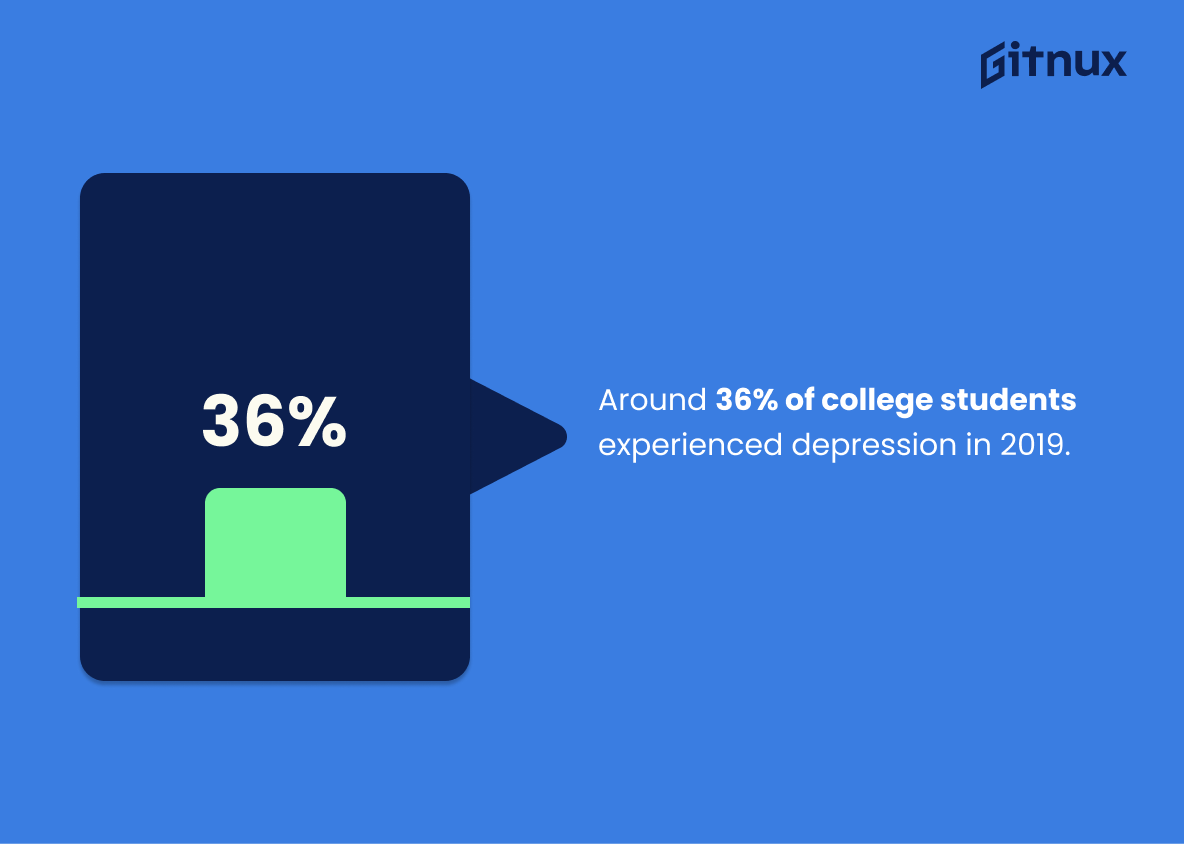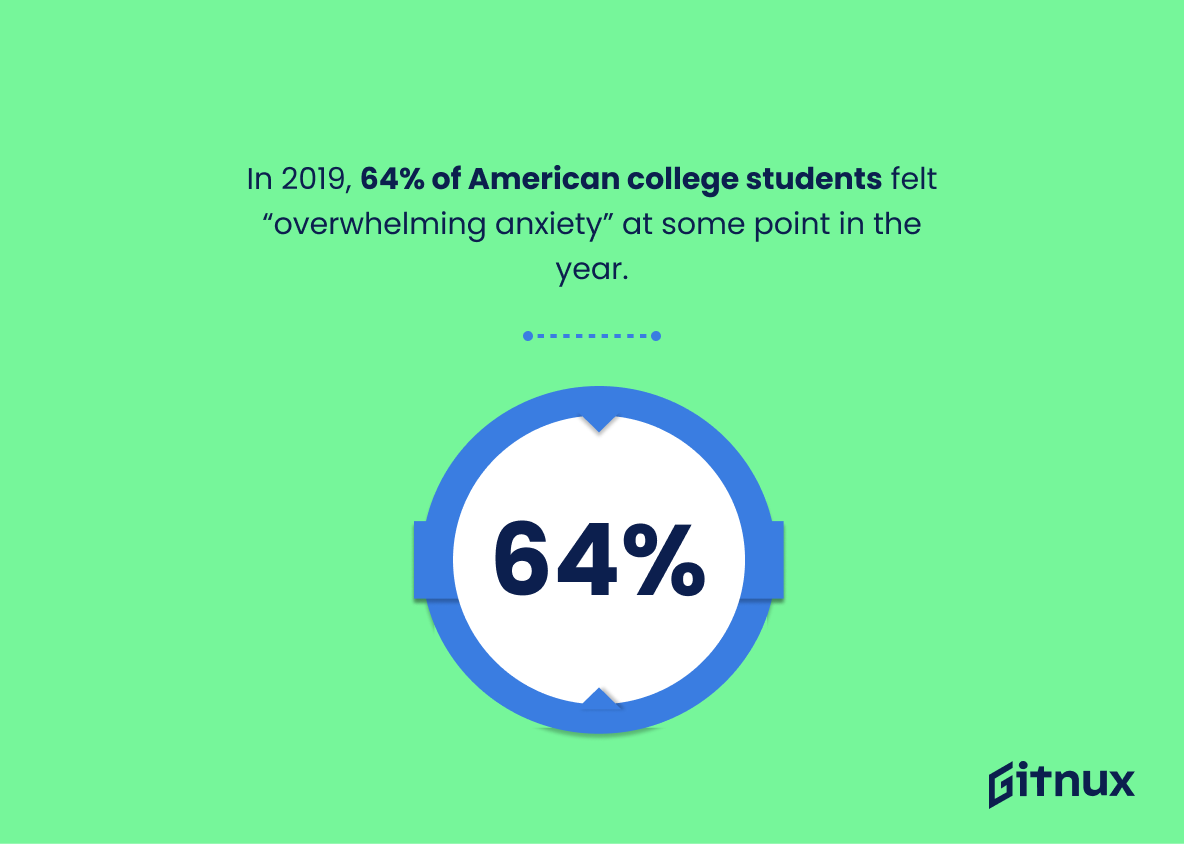In today’s fast-paced world, stress has become a debilitating companion for many, significantly affecting people’s quality of life. Perhaps no one is more familiar with this silent predator than college students. With the escalating academic pressures, challenging social dynamics, and the process of transitioning to adulthood, stress amongst college students is emerging as a critical concern. In this blog post, we delve into the unnerving landscape of stress in college students, supported by eye-opening statistics. Understanding these stress trends and figures will not only shed light on its widespread impact, but it also can serve as a wake-up call for universities, educators, and even students themselves, underscoring the vital need for efficient stress management strategies and mental health support systems within our educational institutions.
The Latest Stress In College Students Statistics Unveiled
80% of college students say they frequently or sometimes experience daily stress.
Undeniably illuminating, the statistic that reveals a concerning 80% of college students frequently or sometimes endure daily stress becomes the heart of our conversation on stress in college students. This numeric testimony paints a vivid picture of the emotional climate in modern-day academia, adding weight and urgency to discussions on mental health resources and stress coping strategies. It breathes life and personal experience into a topic that could otherwise be distanced as mere ‘data’. Furthermore, it presents an opportunity for a call to action, inviting universities, parents and educators alike to step up efforts in supporting the emotional well-being of students. This shared understanding provided by this statistic goes beyond mere numbers – it is a platform for empathy and change.
Almost 50% of female students and 40% of male students reported feeling so depressed that they found it difficult to function.
Delving into the pressures haunting college students, this stark data portraying close to half of our female students and 40% of their male counterparts battling severe depression unravels a profound narrative. The statistic is a stark pointer to the profound reality lurking on campuses, creating a call to action for the educational bodies, mental health professionals, and society at large. It compels us to reevaluate existing mental health support systems in institutions and highlights the pressing need for practical strategies to combat stress among students. Like a glaring alarm in the silence, it underscores the urgent priority of incorporating comprehensive wellbeing programs into the fabric of college life, fostering an environment that promotes mental health resilience, and transforming educational spaces into havens of structured support for students navigating the rocky terrains of emotional distress.
Around 34% of college students reported feeling depressed at some point in the last 90 days.
College students are not just grappling with challenging coursework and future career demands. A hidden narrative thickens when examining data showing that approximately 34% of these students confess to having experienced a spiral of depression during the past 90 days. This statistic paints an unfolding story of the heightened mental pressures college students face, which is becoming a recurrent theme in our higher education system. This numerical depiction of mental health among students is a stark reminder that exploring stress in college is not merely about academic loads, but should also highlight the mental battles our students are fighting. This compelling data nudges us to dig deeper into effective stress management strategies for students and enrich our perspective on the psychological exigencies hiding behind each scholarly mind.
30% of students report stress negatively affecting their academic performance.
Painting a vivid statistical portrait, we see that 3 out of every 10 students recognize stress as a stumbling block on their academic journey. This underlines the compelling urgency for discussions, interventions, and solutions in our blog post “Stress In College Students Statistics” to address these invisible strains. It sheds light on the substantial proportion of students whose academic potential is stifashed and channeled into an anxiety-inducing void, which, inadvertently, impacts their focus, retention, creativity, and overall academic performance. It serves as an alarming wake-up call, guiding us to look beyond grades and understand the emotional landscape of our students, which, when left unchecked, can prevent them from performing at their peak.
69% of students reported experiencing academic stress over textbook costs.
Delving into the staggering fact that 69% of students have reported academic stress due to the burden of textbook costs illuminates a significant undercurrent of distress that ripples through the college student community. In the labyrinth of college stressors—a puzzle that every blog post about Stress In College Students Statistics aims to decipher—textbook costs form an imposing facet, pushing the anxiety needle a notch higher for a massive majority.
Acknowledging this statistic we unravel another layer in the complex matrix of college students’ stress – the often overlooked financial stressor that strikes at the beginning of every semester. An insight like this is crucial as it not only broadens our understanding of causative factors for stress in college students but also forms the foundation for potential countermeasures we might advocate for, like lobbying for more affordable learning materials or more extensive library resources.
60% of college students report ‘overwhelming’ anxiety.
In the matrix of modern student life, anxiety swells like an undisputed tide, wafting over 60% of all college students. Singular in its lucidity, this statistic paints a remarkably vivid picture of the tumultuous emotional landscape inhabiting the campuses today. It’s a distinct siren call demanding immediate attention and action, a glaring spotlight cast on the pressing issue of mental health among the youth. Incorporated in a blog post on Stress in College Students Statistics, it not only underscores the urgency of implementing proactive mental health strategies but also enkindles dialogue among educators, parents, and policymakers. It propels the conversation forward, leading us to question: ‘What can we do today to dial back the anxiety among the students and ensure they rise to the pinnacle of their potential, unencumbered by overwhelming stress?’
62% of undergraduate students reported feeling ‘overwhelming anxiety’ in the past year.
Shining a spotlight on the perturbing panorama of college stress, the sobering statistic – that in the past year, an alarming 62% of undergraduate students have admitted to grappling with ‘overwhelming anxiety’ – frames the dire urgency of this escalating crisis. As waves of anxiety sweep across our campuses, invading nearly two out of three undergraduates, this chilling data signals a dire need for reformed campus mental health support. Within our university community, this statistic serves as a clarion call, raising uncomfortable questions and demanding immediate attention. It’s not just about the raw numbers, which are in themselves profound – it’s about the unseen distress underlying that 62%. As we dissect the landscape of stress in college students, these figures amplify the silent cries for help, adding fuel to our burning discourse on tackling a looming, yet overlooked academic epidemic.
87% of college students feel overwhelmed by all they have to do.
Highlighting that a startlingly high percentage, which is almost 9 out of 10 college students, confess to feeling overwhelmed by their responsibilities, perfectly paints a vivid picture of stress levels in the academic demography. This vital pulse point serves as a focal thread of awareness that weaves its way through the tapestry of our discussion on stress in college, inviting readers to better comprehend the ubiquity and intensity of this issue. This statistic is the key that opens the door to a deeper understanding of how pervasive and pressing student stress really stands in modern society.
41.6% of students reported feeling so depressed it was difficult to function.
In the mosaic of college life, this statistic paints a gripping portrait, translating subjective experiences into quantifiable data – an alarming 41.6% of students find themselves grappling with depression to the point of functional difficulty. This statistic draws a direct line between the stresses of academic life and the mental health of students. It is like a blinking neon sign illuminating the urgent need for campus-wide mental health support and better stress management initiatives. Revisiting and reshaping institutional strategies to prioritize student mental wellbeing is no longer an option but a necessity we ought to underline in immediate bold strokes. Beyond the domain of academia, this statistic raises an alarm for society as a whole, highlighting the responsibility we bear in stitching a stronger safety net for our students, the future of our world.
43% of students experience a mental health disorder, with the majority reporting high levels of stress.
Highlighting the fact that 43% of students grapple with a mental health disorder, predominantly reporting high levels of stress, gives gravity to the situation in our academic institutions. It paints a vivid picture of the mentally challenging landscape students traverse, compelling stakeholders to take requisite action. The stress-ridden college life isn’t just about literature and late-night parties – it’s an authentic mental health crisis, making it a high-priority discussion in our post about Stress in College Students Statistics.
20.2% of college students are diagnosed or treated by a professional for anxiety problems.
Highlighting the sobering truth that 20.2% of college students have been diagnosed or treated for anxiety problems, this stark statistic underscores the overwhelming pressure students face in the university milieu. On the battlefield of academia, this narrative serves as a sturdy pillar, demonstrating the extent of anxiety’s reign. In analyzing Stress In College Students Statistics, it stands as a silent alarm, ringing with urgency, demanding immediate attention and action. It implores the readers to dissect, comprehend, and address the root causes of this unsettling trend. The statistic cries out the unspoken struggles that many students endure, making us question if, amidst the pursuit of knowledge and degrees, are we overlooking wellbeing. This profound number echoes within the blog’s analytical discourse, grounding its narrative and giving it a recognizable human face.
45% of college students do not seek help for mental health issues.
Unearthing the potent fact that almost half the student population, at a staggering 45%, shies away from assistance for mental health issues provides an unnerving perspective on the pervasiveness of stress among them. In the bustling sphere of college life, this figure carves a stark impression of the ‘silent fight’ many students face as they juggle studies, personal growth, and now, mental health dilemmas. It uses the voices of those unheard to accentuate the urgency and necessity of addressing this stressful, college-induced phenomenon. It underlines a significant need for robust, compassionate, and open platforms where students can ventilate their sturdiness or fragility and seek the help they need. This paints a substantial picture, contributing to the comprehensive visualization of students’ stress statistics within a college environment.
48.7% of college students report stress hindering their academic performance.
An intriguing revelation from our study is that nearly half of all college students – 48.7% to be precise – have acknowledged that stress stands as a barricade to their academic success. This nugget of information is a spotlight on the immense psychological pressure that students grapple with, which, in turn, impacts their capacity to perform to the best of their abilities in their academic paths. In our blog post, which dissects the multifaceted issue of stress amongst college students, this statistic represents a critical piece of the puzzle, illuminating the scale and intensity of the problem. It underscores the urgency of devising effective stress management strategies in academic environments, reminding us that college is not just about grades – it’s about supporting student wellbeing in totality.
Around 36% of college students experienced depression in 2019.
Illuminating the often-hidden depths of student struggles, the alarming revelation that roughly 36% of college students suffered from depression in 2019 adds critical dimensionality to our understanding of stress in college students. In the grand mosaic of collegiate stress statistics, this particular piece is of grave importance, revealing not just the ephemeral bouts of anxiety often associated with higher learning, but deeper, more chronic mental health conditions.
Not only does it underscore the severity of psychological burdens carried by a significant subset of students, it fundamentally challenges our perception of a college experience, prompting us to reassess the broader implications for university policies, academic culture and mental health support systems. This numeric nuance thus transforms the traditional narrative about college stress and furthers the discourse towards more holistic, in-depth strategies for addressing mental health in academic environments.
In 2019, 64% of American college students felt “overwhelming anxiety” at some point in the year.
Painting a vivid picture of the unseen battles many college students face, the figure whispers of an overwhelming 64%. In 2019, that was the percentage of American college students grappling with “overwhelming anxiety” at some point during the year – that’s almost two-thirds of the college population. Highlighting the widespread prevalence of anxiety, this figure is a clarion call to action. Navigating through the once exciting college life, these students are instead buried under the weight of anxiety. In a blog post exploring stress in college students, such an alarming statistic works as a spotlight, drawing attention to the severity of the issue and the pressing requirement for effective coping strategies and more comprehensive mental health support on campuses.
83% of students say that stress negatively impacts their academic performance.
Imagine navigating a maze, trying to juggle numerous responsibilities, deadlines, and expectations with your hands tied by unseen constraints – the unparalleled pressure college students face. The riveting statistic, where 83% of students affirm that stress damages their academic performance, isn’t simply a number; it’s a visceral cry for help in the academia realm. This statistic paints a grim picture of the stress epidemic infiltrating campuses, shackling students’ potential and overshadowing their achievements. In a blog post dissecting Stress In College Students Statistics, this information is a powerful arrow in the quiver, unveiling the hidden enemy – stress, and its profound impact on students’ journey towards academic excellence. Crucially, it underscores the importance of prompt interventions, stress management strategies, and healthier academia cultures to reverse this alarming trend and foster a better educational environment.
17% of college students have been diagnosed with depression, anxiety, or adjustment disorder.
Shedding light on an alarming mental health crisis, the stark figure of 17% of college students diagnosed with depression, anxiety, or adjustment disorder puts a severe spotlight on the pressures and difficulties faced by this demographic. This figure vibrantly colorizes a corner of the broader canvas of stress in higher education, offering invaluable insight into the troubling prevalence of mental health issues amongst students. It acts as a critical warning signal – highlighting the gravity of student stress, a clarion call for health professionals, educational institutions, policy makers, parents, and students themselves to rally around preventative measures, support mechanisms, and tailored mental health services.
Around 31% of college students have contemplated suicide in the past year.
Delving into the depth of the chilling figure of 31% of college students considering the prospect of suicide in the past year casts light on the dire seriousness of stress levels. It dramatically underlines how the landscape of the academic pressure cooker contributes to severe mental health consequences. This statistic silently shouts an urgent call for interventions, conveying the message that college students are no longer merely battling assignments and exams, but are in a struggle for their wellbeing, and tragically, their lives. Such a heartrending percentage serves as a stark reminder that beyond grades and graduation, the educational milieu must prioritize student mental health, making it an irrefutable focal point in any dialogue around college stress statistics.
Nearly 1 in 5 college students are so stressed they consider suicide.
Examining the harrowing figure that “nearly 1 in 5 college students are so stressed they consider suicide” paints a stark image of the mental health crisis among college students. This statistic illuminates the dire extent of stress-induced mental health struggles that college students face. In a blog post discussing Stress In College Students Statistics, such a figure underlines the urgency of prioritizing mental health care in institutions of higher learning. Furthermore, it strikes a potent call-to-action for educators, policymakers, and society at large to implement effective stress management strategies, bolster counseling services, and further promote mental health discussions on campus. Therefore, this riveting statistic serves as a poignant reminder that stress in college is not just a hurdle to academic accomplishments, but a powerful determinant of the students’ overall wellbeing and, in extreme cases, their very survival.
85% reported feeling overwhelmed by everything they had to do at some point within the past year.
Unraveling the implications of the statistic revealing a staggering 85% of individuals admitting to feelings of being overcome due to the immensity of their tasks within the past year, it punctuates the narrative of stress among college students. Serving to not only quantify, but also validate the widespread existence of academic pressure, it highlights the tangible need for proactive stress management strategies on university campuses. In the realm of a blog post on College Student Stress Statistics, this statistic emerges as a cornerstone, bolstering understanding of the issue and painting a vivid, relatable picture of the student experience, enabling the discussion to be more impactful and engaging for the readers.
Conclusion
The statistics on stress in college students reveal a daunting scenario. But these numbers are not just figures – they correspond to real students grappling with significant health issues. Universities, mental health professionals, and even students themselves need to acknowledge and confront these challenges. With rising awareness, early intervention, and holistic stress-management strategies, it’s possible to modify these statistics for the better. The goal is not just to graduate with a degree, but to emerge from college as healthy, balanced individuals ready for the next phase of their lives.
References
0. – https://www.www.today.com
1. – https://www.www.verywellmind.com
2. – https://www.acha.org
3. – https://www.www.apa.org
4. – https://www.afsp.org
5. – https://www.www.ncbi.nlm.nih.gov
6. – https://www.www.onlinecolleges.net
7. – https://www.www.nami.org
8. – https://www.www.bestcolleges.com
9. – https://www.www.acha.org
10. – https://www.library.educause.edu
11. – https://www.www.acmh-mi.org
12. – https://www.www.healthline.com
13. – https://www.mindwise.org
14. – https://www.www.online-sciences.com
15. – https://www.www.cbsnews.com
16. – https://www.www.affordablecollegesonline.org
